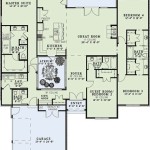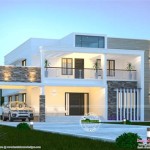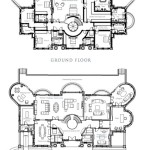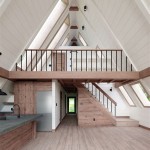Old World House Plans refer to architectural designs inspired by historical European building styles. They evoke a sense of charm, elegance, and nostalgia, bringing a piece of the past into modern homes. An example of an Old World House Plan is the French Country style, characterized by its stone or brick facade, arched windows, and sweeping rooflines.
These plans are meticulously designed to recreate the essence of traditional European architecture while incorporating modern amenities and conveniences. From cozy cottages to grand estates, Old World House Plans offer a wide range of options to suit different tastes and lifestyles.
In this article, we will delve into the intricacies of Old World House Plans, exploring their unique features, benefits, and considerations for building or renovating a home with this architectural charm.
Old World House Plans are characterized by their unique features and benefits, which contribute to their enduring popularity and charm:
- Authentic European designs
- Timeless and elegant aesthetics
- Emphasis on symmetry and balance
- Ornate details and craftsmanship
- Use of traditional materials
- Spacious and inviting interiors
- Well-defined outdoor spaces
- Energy efficiency and sustainability
- Increased property value
- Historical and cultural significance
These points underscore the appeal and value of Old World House Plans, offering a blend of historical charm, modern functionality, and enduring beauty.
Authentic European designs
Old World House Plans are renowned for their authentic European designs, which draw inspiration from centuries-old architectural traditions. These plans capture the essence of various European styles, including:
- French Country:
French Country House Plans evoke the charm of the French countryside, featuring stone or brick facades, arched windows, and sweeping rooflines. They often incorporate cozy kitchens, inviting living spaces, and elegant outdoor terraces.
- Tuscan:
Tuscan House Plans are inspired by the sun-drenched villas of Tuscany, Italy. They typically feature warm earth tones, terracotta roofs, and arched windows. The interiors are characterized by open and airy spaces, with a focus on natural light and ventilation.
- Spanish Colonial:
Spanish Colonial House Plans reflect the architectural heritage of Spanish colonial settlements in the Americas. They often feature whitewashed walls, red tile roofs, and wrought-iron balconies. The interiors are spacious and inviting, with a blend of traditional and modern elements.
- English Tudor:
English Tudor House Plans are reminiscent of the grand manor houses of the Tudor period in England. They are characterized by steeply pitched roofs, half-timbered exteriors, and tall chimneys. The interiors are cozy and inviting, with exposed beams and fireplaces.
These are just a few examples of the diverse range of authentic European designs that can be found in Old World House Plans. By incorporating elements from these timeless architectural traditions, these plans create homes that exude elegance, charm, and a deep connection to the past.
Timeless and elegant aesthetics
Old World House Plans are renowned for their timeless and elegant aesthetics, which transcend fleeting trends and fads. These plans draw inspiration from centuries-old architectural traditions, resulting in homes that exude an air of sophistication and enduring beauty.
One of the key elements that contribute to the timeless appeal of Old World House Plans is their emphasis on symmetry and balance. The facades of these homes are often characterized by symmetrical windows, doors, and gables, creating a sense of order and harmony. This symmetry extends to the interior spaces as well, with rooms arranged in a logical and balanced manner.
Another defining feature of Old World House Plans is their intricate details and craftsmanship. From decorative moldings and cornices to hand-carved woodwork and wrought-iron accents, these homes are adorned with a wealth of embellishments that add depth and character. These details are not merely decorative; they also serve to highlight the skill and artistry of the builders and craftsmen who created these homes.
The use of traditional materials, such as stone, brick, and wood, further enhances the timeless appeal of Old World House Plans. These materials have a natural beauty and durability that has been proven to withstand the test of time. They also create a sense of warmth and authenticity, evoking the charm of centuries-old European villages and estates.
The timeless and elegant aesthetics of Old World House Plans are not only visually appealing but also contribute to the overall livability and enjoyment of these homes. The symmetrical layouts and balanced proportions create a sense of harmony and order, while the intricate details and craftsmanship add a touch of luxury and sophistication. These homes are designed to be both beautiful and functional, providing a comfortable and inviting living environment for generations to come.
Emphasis on symmetry and balance
Old World House Plans place a strong emphasis on symmetry and balance, which are considered essential principles of classical architecture. This emphasis is evident in both the exterior and interior design of these homes.
- Symmetrical facades:
The facades of Old World House Plans are often characterized by symmetrical windows, doors, and gables. This symmetry creates a sense of order and harmony, and it is often enhanced by the use of a central axis or focal point, such as a grand entrance or a Palladian window.
- Balanced interiors:
The interiors of Old World House Plans are also typically balanced and symmetrical. Rooms are arranged in a logical and orderly manner, with corresponding spaces on either side of a central axis. This balance creates a sense of flow and harmony, and it makes the home feel more spacious and inviting.
- Formal gardens:
The emphasis on symmetry and balance extends to the outdoor spaces of Old World House Plans as well. Formal gardens are often designed with symmetrical layouts, featuring geometric shapes, manicured hedges, and carefully placed fountains or sculptures. These gardens create a sense of order and tranquility, and they provide a beautiful backdrop for the home.
- Classical proportions:
Old World House Plans often incorporate classical proportions, which are based on mathematical ratios that have been used in architecture for centuries. These proportions create a sense of harmony and beauty, and they can be seen in the dimensions of the rooms, the height of the ceilings, and the size of the windows and doors.
The emphasis on symmetry and balance in Old World House Plans is not merely aesthetic; it also serves a functional purpose. Symmetrical designs are easier to navigate and understand, and they create a sense of order and predictability that can be calming and reassuring. Additionally, balanced spaces are more likely to feel harmonious and inviting, which makes them more enjoyable to live in.
Ornate details and craftsmanship
Old World House Plans are renowned for their ornate details and exquisite craftsmanship, which add a touch of luxury and sophistication to these homes. These details are not merely decorative; they also serve to highlight the skill and artistry of the builders and craftsmen who created these homes.
- Intricate moldings and cornices:
Old World House Plans often feature intricate moldings and cornices that add depth and character to the walls and ceilings. These moldings can be simple or elaborate, and they can be used to create a variety of decorative effects. For example, a simple chair rail molding can add a touch of elegance to a dining room, while an elaborate cornice molding can create a dramatic focal point in a grand living room.
- Hand-carved woodwork:
Hand-carved woodwork is another common feature of Old World House Plans. This woodwork can be found on a variety of elements, including doors, windows, mantels, and staircases. Hand-carved details add a unique and personal touch to a home, and they can be used to create a variety of styles, from traditional to contemporary.
- Wrought-iron accents:
Wrought-iron accents are another popular feature of Old World House Plans. Wrought iron can be used to create a variety of decorative elements, such as balconies, railings, gates, and light fixtures. Wrought-iron accents add a touch of old-world charm to a home, and they can also be used to create a sense of security and privacy.
- Stained glass windows:
Stained glass windows are a beautiful and unique way to add color and light to a home. Stained glass windows can be found in a variety of styles, from traditional to contemporary, and they can be used to create a variety of effects. For example, a stained glass window in a living room can create a warm and inviting atmosphere, while a stained glass window in a bathroom can create a spa-like retreat.
These are just a few examples of the many ornate details and craftsmanship that can be found in Old World House Plans. These details add a touch of luxury and sophistication to these homes, and they help to create a truly unique and memorable living environment.
Use of traditional materials
Old World House Plans often incorporate traditional materials, such as stone, brick, and wood, which contribute to their timeless appeal and durability.
- Stone:
Stone is a classic building material that has been used for centuries to create beautiful and durable homes. Stone houses are known for their strength, longevity, and fire resistance. They also have a natural beauty that can be enhanced with a variety of finishes, such as carving, engraving, and painting. Stone is a versatile material that can be used to create a variety of architectural styles, from traditional to contemporary.
- Brick:
Brick is another popular traditional building material that is known for its durability, fire resistance, and low maintenance. Brick houses have a classic and timeless look that can be customized with a variety of colors, textures, and patterns. Brick is also a versatile material that can be used to create a variety of architectural styles, from traditional to modern.
- Wood:
Wood is a natural and renewable building material that has been used for centuries to create beautiful and comfortable homes. Wood houses are known for their warmth, beauty, and structural strength. They are also relatively easy to build and maintain. Wood is a versatile material that can be used to create a variety of architectural styles, from traditional to contemporary.
- Other traditional materials:
In addition to stone, brick, and wood, Old World House Plans may also incorporate other traditional materials, such as slate, tile, and plaster. These materials add to the timeless appeal and durability of these homes, and they can be used to create a variety of architectural styles.
The use of traditional materials in Old World House Plans is not merely aesthetic; it also serves a functional purpose. These materials are known for their durability, fire resistance, and low maintenance, which makes them ideal for building homes that are meant to last for generations.
Spacious and inviting interiors
Old World House Plans are known for their spacious and inviting interiors, which create a sense of grandeur and comfort. These homes often feature large, open rooms with high ceilings and an abundance of natural light. The floor plans are typically well-designed, with a logical flow from one room to the next.
One of the key features of spacious interiors is the use of large windows and doors. These openings allow for plenty of natural light to enter the home, creating a bright and airy atmosphere. Additionally, large windows and doors provide stunning views of the surrounding landscape, bringing the outdoors in.
Another important element of spacious interiors is the use of high ceilings. High ceilings create a sense of volume and grandeur, making the rooms feel more spacious and inviting. They also allow for the use of dramatic architectural features, such as chandeliers, ceiling medallions, and crown moldings.
Finally, spacious interiors are often complemented by the use of rich materials and finishes. Hardwood floors, marble countertops, and elegant lighting fixtures add a touch of luxury and sophistication to these homes. The result is a living environment that is both comfortable and stylish.
The spacious and inviting interiors of Old World House Plans are a major reason for their enduring popularity. These homes provide a comfortable and luxurious living environment that is perfect for entertaining guests or simply relaxing with family and friends.
Well-defined outdoor spaces
Old World House Plans often feature well-defined outdoor spaces that extend the living areas beyond the walls of the home. These spaces are designed to be both functional and beautiful, providing a seamless transition between indoor and outdoor living.
- Patios and terraces:
Patios and terraces are popular outdoor spaces that provide a level surface for entertaining, dining, or simply relaxing. They can be constructed from a variety of materials, such as stone, brick, or concrete, and can be covered or uncovered. Patios and terraces are often located adjacent to the home, with easy access from the kitchen or living room.
- Porches and verandas:
Porches and verandas are covered outdoor spaces that offer protection from the sun and rain. They are typically located at the front or side of the home, and can be used for a variety of purposes, such as relaxing, reading, or entertaining guests. Porches and verandas often feature decorative elements, such as columns, railings, and gingerbread trim.
- Courtyards and courtyards:
Courtyards and courtyards are enclosed outdoor spaces that create a private and intimate setting. They are often surrounded by walls or hedges, and can feature a variety of elements, such as fountains, sculptures, and plants. Courtyards and courtyards are perfect for entertaining, dining, or simply relaxing in a secluded outdoor space.
- Gardens and landscaping:
Gardens and landscaping play an important role in creating well-defined outdoor spaces. They can be used to create a variety of different atmospheres, from formal and elegant to casual and inviting. Gardens and landscaping can also provide privacy, shade, and a sense of connection to nature.
Well-defined outdoor spaces are an essential part of Old World House Plans. These spaces extend the living areas beyond the walls of the home, creating a seamless transition between indoor and outdoor living. They provide a place to relax, entertain guests, or simply enjoy the beauty of nature.
Energy efficiency and sustainability
Passive design strategies
Old World House Plans often incorporate passive design strategies to reduce energy consumption and improve sustainability. These strategies take advantage of natural resources, such as sunlight, heat, and air flow, to create a comfortable indoor environment without relying heavily on mechanical systems.
Examples of passive design strategies include:
- Orientation:
The orientation of a home can have a significant impact on its energy efficiency. Homes that are oriented to the south in the Northern Hemisphere (and to the north in the Southern Hemisphere) will receive more sunlight during the winter months, which can help to reduce heating costs. Additionally, homes that are designed to take advantage of prevailing breezes can use natural ventilation to cool the home in the summer months.
- Insulation:
Insulation is an important factor in reducing heat loss in the winter and heat gain in the summer. Old World House Plans often incorporate high levels of insulation in the walls, roof, and foundation. This insulation helps to maintain a comfortable indoor temperature without relying on excessive heating or cooling.
- Windows and doors:
Windows and doors are another important factor in energy efficiency. Old World House Plans often feature energy-efficient windows and doors that are designed to minimize heat loss and gain. These windows and doors may have double or triple glazing, as well as low-e coatings that reflect heat back into the home.
By incorporating these passive design strategies, Old World House Plans can significantly reduce their energy consumption and improve their sustainability. These homes are designed to be comfortable and efficient, while also being respectful of the environment.
Increased property value
Old World House Plans are not only beautiful and comfortable, but they can also be a wise investment. Homes built in this style tend to have a higher resale value than homes built in other styles. There are several reasons for this, including:
- Timeless appeal:
Old World House Plans have a timeless appeal that transcends fleeting trends. This means that these homes are likely to remain popular for many years to come, which can help to increase their resale value.
- High quality construction:
Old World House Plans are typically built with high quality materials and craftsmanship. This results in homes that are durable and well-built, which can also contribute to their increased resale value.
- Desirable features:
Old World House Plans often incorporate desirable features, such as spacious rooms, high ceilings, and well-defined outdoor spaces. These features are in high demand among homebuyers, which can help to increase the resale value of these homes.
- Historical significance:
Old World House Plans that are built in a historically significant style may have an even higher resale value. This is because these homes are often seen as being part of the community’s heritage, which can make them more desirable to buyers.
Overall, Old World House Plans are a wise investment for homeowners who are looking for a beautiful, comfortable, and valuable home.
Historical and cultural significance
Preservation of architectural heritage
Old World House Plans play an important role in preserving the architectural heritage of a community. These homes are often built in a style that is consistent with the historic architecture of the area, which helps to maintain the community’s unique character and sense of place. Additionally, Old World House Plans can be designated as historic landmarks, which provides them with legal protection from demolition or alteration. This helps to ensure that these homes will continue to be a part of the community for generations to come.
Connection to the past
Old World House Plans provide a tangible connection to the past. These homes are often built on land that has been in the same family for generations, and they may have been passed down from one generation to the next. As a result, Old World House Plans can hold a great deal of sentimental value for the families that live in them. Additionally, these homes can provide a sense of continuity and stability in a rapidly changing world.
Reflection of cultural values
Old World House Plans can also reflect the cultural values of the community in which they are built. For example, a home built in the Spanish Colonial style may reflect the community’s Hispanic heritage, while a home built in the Victorian style may reflect the community’s Victorian roots. In this way, Old World House Plans can serve as a reminder of the community’s history and culture.
Contribution to community identity
Old World House Plans can contribute to a community’s sense of identity. These homes are often seen as being part of the community’s heritage, and they can help to create a sense of place for residents. Additionally, Old World House Plans can be used to promote tourism and economic development in a community.
Overall, Old World House Plans have a significant historical and cultural significance. These homes are not only beautiful and comfortable, but they also play an important role in preserving the architectural heritage of a community, providing a connection to the past, reflecting cultural values, and contributing to community identity.










Related Posts








